How the Internet of Bodies (IoB) will literally connect you to the internet
Privacy and security experts have been warning about Internet of Things (IoT) technology for many years and continue to do so. Internet of Bodies (IoB) technology falls under the IoT umbrella and it is currently unregulated.
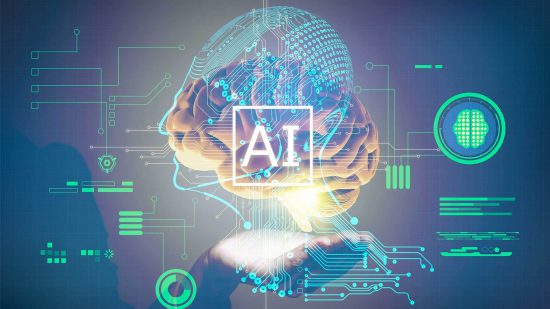
For those who aren’t familiar with what IoT entails, an excellent description has been provided on the Whatis5G.Info website: “The Internet of Things (IoT), as being marketed and sold to the public, is a vision of connecting every ‘thing’ possible to the Internet – all machines, appliances, objects, devices, animals, insectsand even our brains.
In addition, the IoT will include artificial intelligence (AI), augmented reality (AR), virtual reality (VR), robots, microchipped humans, and augmented humans (humans with some form of technology implanted or integrated into their biology to ‘enhance’ human characteristics or capabilities).”
IoT sensors and surveillance cameras will pepper our communities as well. New IoT cyber physical systems will render all objects “smart” – i.e. connected to the “Cloud” – thus enabling pervasive machine-to-machine (M2M) communications and massive data collection and leaving us open to devastating cyber attacks.
In November 2020, Activist Post reported about a law review article which revealed legal and social issues associated with both IoB and IoT technology.
Additional scary details and pictures were provided in an article published by Truth UnMuted: “The Internet of Bodies (IoB) and Hacking Your DNA. How Implantable Devices Will Connect Your Body to the Internet”.
The age of the Internet of Things (IoT), and soon to follow the Internet of Bodies (IoB), is now upon us. The RAND Corporation, the think tank behind some of the world’s most influential and frightening ideas and technologies, has released a report titled “The Internet of Bodies: Opportunities, Risks, and Governance”.
You should be wary of any reports issued by the RAND Corporation. Alex Abella, author of “Soldiers of Reason: The RAND Corporation and the Rise of American Empire”, explains why: “RAND was, and is, the essential establishment organization. Throughout its history, RAND has been at the heart of that interweaving of Pentagon concupiscence and financial rapacity that President Eisenhower aimed to call the military-industrial-legislative complex. RAND has literally reshaped the modern world – and very few know it.”
With this understanding, there is much cause for alarm with the issuance of this new report.
What is the Internet of Bodies (IoB)?
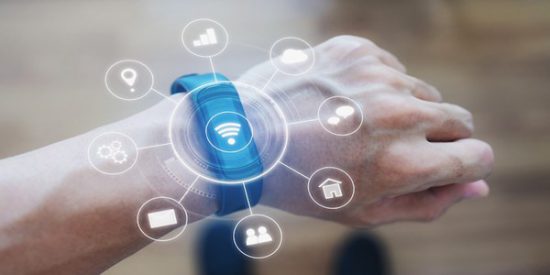
RAND defines the IoB as “a growing industry of devices that monitor the human body, collect health and other personal information, and transmit that data over the Internet.”
In order to qualify as an IoB device, the technology is necessary to:
- contain software or computing capabilities
- be able to communicate with an Internet-connected device or network
An IoB device is necessary to also satisfy one or both of the following:
- collect person-generated health or biometric data
- be able to alter the human body’s function
The technology that Hollywood has presented over the years in dystopian sci-fi fantasies is now a reality. In the very near future, the technocratic overlords of science, health, finance, and Big Tech desire humanity to go from wearable devices to devices embedded within our bodies.
How IoB intersects with IoT
IoT devices such as smart meters, smart watches, virtual assistants, and self-driving cars connect directly to the Internet or through a local network. As IoT devices become more commonplace, experts predict that acceptance of and desire for IoB devices will also increase.
The RAND report predicts: “By 2025, there will be more than 41 billion active IoT devices, generating 2.5 quintillion bytes of data daily on environment, transportation, geolocation, diet, exercise, biometrics, social interactions, and everyday human lives. This explosion in IoT devices will result in further popularity of IoB devices.”
IoB products in use or being developed
RAND report shows just how invasive and pervasive IoB technology can become. By the time it is fully unleashed, no part of the human body will escape its interference. They even plan to have our toilets connected to the Internet where they will monitor our waste using BioBot technology to determine what we eat, what drugs we may take, and analyze our genetic material!
Here are just a few examples of the technology currently being developed:
- Augmented reality contact lenses
- Brain reading and writing devices
- Body-implanted sensors
- Clothing with sensors
- Implantable microchips (RFID and NFC)
- Psychic and emotional sensors
- Artificial organs (e.g. pancreas, liver)
- Bluetooth connected diaper

Not even babies will be able to escape this nightmare where every bodily function is constantly tracked and monitored. The sad part is that many people will welcome these intrusive technologies because they’re convenient and timesaving. However, exchanging bodily sovereignty for convenience is never a fair transaction. It almost always serves to benefit those who desire more control over our lives. Through adoption of technological advancement, humans are consenting to allow technocrats to dictate every facet of life. Soon doctors will be able to know if you are taking prescribed medication appropriately, and will have tools to report you if you aren’t. Digital pills will be used to record your medical compliance as the RAND report signals:
“In 2017, the FDA approved the first digital pill: an aripiprazole tablet with an ingestible sensor embedded in the pill that records that the medication was taken. The product is approved for the treatment of schizophrenia, acute treatment of maniac and mixed episodes associated with bipolar disorder, and for use as an add-on treatment for depression in adults… The system works by sending a message from the pill’s sensor to a wearable patch. The patch transmits the information to a mobile application so that patients can track the ingestion of the medication on their smartphone. Patients can also permit their caregivers and physician to access the information through a web-based portal.”
IoB needs advanced technologies for peak usefulness
If you’re wondering what will power all of this forthcoming technology, the answer lies in a combination of 5G, next generation Wi-Fi, and satellite Internet. These advanced systems will increase data transfer speeds and offer extra-low latency so that those audio and visual dropouts on Zoom calls will be relegated to the dust bin of history. Combined, these systems will provide the power and resources necessary to create a control and surveillance grid that can be monitored in real time. RAND confirms this purpose, illustrating that: “These advancements will enable consumer IoT technologies, such as smart home systems, to connect to IoB devices so that, for example, one’s smart thermostat will be linked to her smart clothing and automatically can regulate the temperature in her home. Greater connectivity and the widespread packaging of IoB in smartphones and appliances – some of which might collect data unbeknownst to the user – will increase digital tracking of users across a range of behaviors.”
As 5G is widely being rolled out in the U.S. and other parts of the globe, plans are already being made to perfect and implement 6G. According to author Thomas S. Rappaport, 6G technology “will usher in the ability to send wireless signals at the rate of human computation”… and “could mean that human intelligence could eventually be sent over the air instantaneously.” Experts predict 6G will be widely available by 2030.
To top it off, nanobiotechnology is being used to manipulate cells and interconnect human bodies to the Internet. Scientists, researchers, and tech geniuses are attempting to play God by reengineering our cell structures, causing them to communicate with IoB devices. According to an article in News Medical, nanotechnology has “enabled several types of next-generation vaccines” such as the mRNA coronavirus vaccine being developed by Moderna.
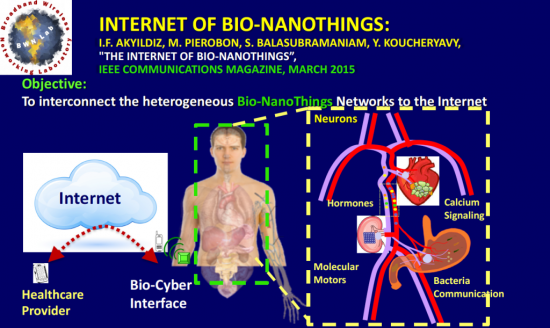 Potential Benefits
Potential Benefits
The potential downside of IoB technology has been clearly established, but can anything good come out of this? There is no way IoB could be sold to the masses if it didn’t promise to improve quality of life. As RAND indicates:
“IoB might enable wider access to health care by enabling inexpensive ‘distributed’ or ‘democratized’ health care or by decreasing the need for risky or costly medical intervention. Through greater health awareness, improved prevention, and more-effective intervention, IoB even has the potential to drive down health-care costs. It was hypothesized that early detection and intervention through remote monitoring were the primary drivers of the reduction. IoB devices can gather vital data to provide medical alerts to doctors, patients, and caregivers. IoB devices might also prove useful in guiding treatment for those who cannot speak or articulate their symptoms or thoughts, such as infants, stroke victims, or dementia patients, by alerting caregivers to significant changes in vital signs, for instance. IoB is a promising approach for developing real-time remote health monitoring systems for noncommunicable disease patients, most immediately diabetics and heart patients.”
If any of these scenarios helps save and improve lives, then maybe IoB is a worthy endeavor. However, a careful reading of this quote reveals that IoB benefits are described with phrases such as “might enable,” “has the potential,” “might also prove useful,” and “is a promising approach.” In other words, IoB technology is still experimental and many aspects can go wrong if implemented on a wide scale.
We already know that radiation from mobile phones causes cancer. What occurs when IoB devices powered by tech with even greater levels of radiation are implanted in the human body? Where are the long-term safety studies? If they already exist or are currently being conducted, who is sponsoring them? If the studies originate from the same industries poised to profit from their use, then malfeasance is all but guaranteed.
Potential for Misuse
Unfortunately, it seems as though the negative consequences of IoB devices will far outweigh their advances. There are just way too many aspects that can go wrong as indicated in Table 4.

From death, to national security challenges, to infringement on body autonomy, the negative outcomes of IoB technology are devastating. RAND confirms even more concerns, highlighting that:
“Access to huge torrents of live-streaming biometric data might enable a surveillance state of unprecedented intrusion and consequence. It might increase health outcome disparities, where only people with financial means have access to any of these benefits. The increased connectivity in IoT and IoB devices may provide an increased attack surface that introduces more vulnerabilities through these networks. Just as foreign possession of data on Americans’ dating habits or HIV status could be used for nefarious purposes, U.S. consumers’ biometric and health data might be exploited by adversaries who could compile data from numerous sources to build detailed profiles of their American targets.”
Of course, many people already have implanted medical devices to simply keep them alive. Yet, even these types of frequently used implants are largely untested. A Consumer Reports article underscored this issue, asserting:
“Tens of millions of Americans live with medical devices implanted in their bodies – artificial joints, heart defibrillators, surgical mesh. And it’s a safe bet that most of them assume that someone, somewhere, tested the devices for safety and effectiveness.
But that is rarely the case. For most implants and other high-risk devices brought to market, manufacturers do nothing more than file some paperwork and pay the Food and Drug Administration a user fee of roughly $4,000 to start selling a product that can rack up many millions of dollars in revenue.”
IoB is currently unregulated
While acknowledging the extreme danger this technology introduces, companies are continually creating new products and collecting data without much oversight or regulation. This poses two critical questions: (1) who owns the data collected through IoB devices and technology and (2) how will tech developers and data collectors be regulated? RAND acknowledges the lack of answers regarding these issues, explaining:
“As with IoB devices, there is no single entity that provides oversight to IoB data. Data brokers are largely unregulated, and the United States has no federal data privacy law but relies on state laws which differ greatly.”
“The lack of consistency in IoB laws among states and between the state and federal level potentially enables regulatory gaps and enforcement challenges. As in many areas, rapid advancements in IoB technologies have outpaced the development of policy to address their risks.”
“There are as yet no legal norms about who owns the data generated by any given IoB device – the user, the manufacturer, the health-care provider? Policies that regulate the sale of user information to third-party data brokers, or that regulate how data brokers function, are nascent if they exist at all.”
IoB is directly connected to transhumanism, biohacking, and cyborgs
We are constantly being conditioned to readily accept invasive technology as demonstrated in this Apple Watch ad.
Many people are already used to data-tracking devices, but are they prepared to endure even more invasive technology as proposed by transhumanists, bio/body hackers, and cyborgs? RAND describes each of these movements as follows:
“Transhumanism is a worldview and political movement advocating for the transcendence of humanity beyond current human capabilities. Transhumanists want to use technology, such as artificial organs and other techniques, to halt aging and achieve ‘radical life extension’.”
“Bodyhacking generally refers to modifying the body to enhance one’s physical or cognitive abilities.”
“Cyborgs, or cybernetic organisms, are people who have used machines to enhance intelligence or the senses.”
Here are just a few examples of the bizarre things people ascribing to one or more of these movements have done to their bodies:
A colorblind man had an antenna surgically implanted in his head to “hear” color
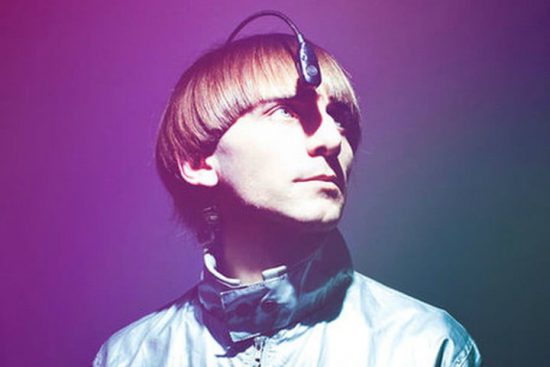
A filmmaker had a wireless video camera planted in his eye, becoming the world’s first “eyeborg”
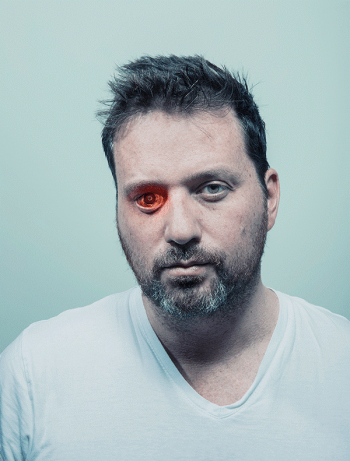 A company called Grindhouse Wetware created the Northstar V1 device, which shines red light through the skin, mimicking bioluminescence.
A company called Grindhouse Wetware created the Northstar V1 device, which shines red light through the skin, mimicking bioluminescence.
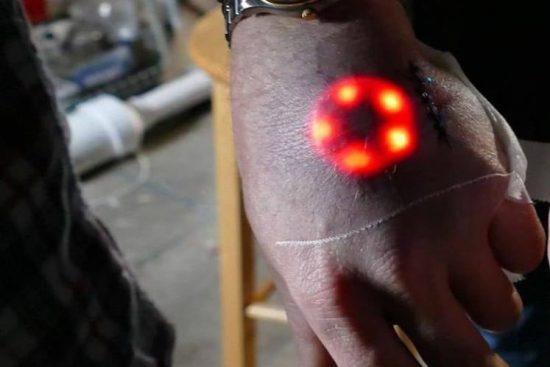
People in Sweden have gotten microchips placed in their hands to replace cash and credit cards.
With people already willingly transforming themselves into cyborgs, it makes humanity ripe for mass bodily intrusion, genetic modification and DNA tampering, and merging with machines as envisioned by individuals such as Nick Bostrom, Ray Kurzweil, Zoltan Istvan, and Klaus Schwab.
IoB paves the way for the Great Reset and 4th Industrial Revolution
In his 2016 book The Fourth Industrial Revolution, Klaus Schwab, CEO of the World Economic Forum, wrote:
“Of the many diverse and fascinating challenges we face today, the most intense and important is how to understand and shape the new technology revolution, which entails nothing less than a transformation of humankind. We are at the beginning of a revolution that is fundamentally changing the way we live, work, and relate to one another. In its scale, scope and complexity, what I consider to be the fourth industrial revolution is unlike anything humankind has experienced before.
…The changes are so profound that, from the perspective of human history, there has never been a time of greater promise or potential peril.”
To achieve this new technological revolution, Schwab advocates for the increase in IoB tech citing that 82% of executives surveyed believe a tipping point will occur by 2025 where people will readily accept implantable devices.
“People are becoming more and more connected to devices, and those devices are increasingly becoming connected to their bodies. Devices are not just being worn, but also being implanted into bodies, serving communications, location and behaviour monitoring, and health functions… Smart tattoos and other unique chips could help with identification and location. Implanted devices will likely also help to communicate thoughts normally expressed verbally through a ‘built-in’ smartphone, and potentially unexpressed thoughts or moods by reading brainwaves and other signals.”
Schwab is looking forward to the day when bio implants can read our minds! Are you starting to get the full picture of where all of this is leading? The question to ask as more technology is developed and put to use is who benefits? Are these initiatives really for the good of humankind, or just a few at the top of the spectrum who desire more control over the masses? A further sampling of Schwab’s thoughts will help provide definitive answers to these questions. In his 2018 follow-up book, Shaping the Fourth Industrial Revolution, Schwab explains:
“The world is at a crossroads. The social and political systems that have lifted millions out of poverty and shaped our national and global policies for half a century are failing us. The economic benefits of human ingenuity and effort are becoming more concentrated, inequality is rising, and the negative externalities of our integrated global economy are harming the natural environment and vulnerable populations: the stakeholders least able to absorb the cost of progress.
Public trust in business, government, the media and even civil society has fallen to the point where more than half of the world feels the current system is failing them. The widening gap in trust between those in their country’s top income quartile and the rest of the population indicates that social cohesion is fragile at best, and very close to breaking down at worst.
It is in this precarious political and social context that we face both the opportunities and the challenges of a range of powerful, emerging technologies—from artificial intelligence, to biotechnologies, advanced materials to quantum computing—that will drive radical shifts in the way we live, and which I have described as comprising the Fourth Industrial Revolution.”
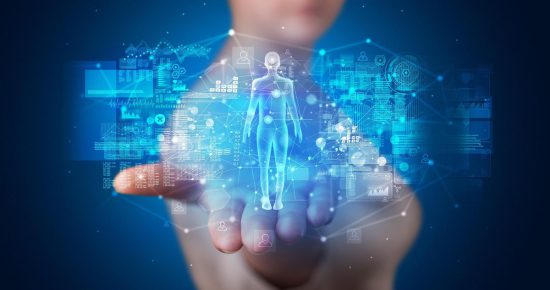
To put all of this in plain terms, Schwab and his ilk are exacerbating problems like poverty, inequality, civil unrest, mistrust in government, and environmental degradation to cause humanity to desire a better way. That way is what he terms the Fourth Industrial Revolution. Combined with plans for The Great Reset, the cabal comprising the World Economic Forum and many other global entities plan to offer a solution that will solve all of humanity’s ills, but in reality will serve to further enslave us. You will be controlled by the technology they are creating at breakneck speed, and subjugated to a lesser form of humanity by disguising it as advancement and enlightenment. Regarding his vision to remake humanity in his image, Schwab goes on to say:
“The future will challenge our understanding of what it means to be human, from both a biological and a social standpoint. Emerging biotechnology agendas promise to improve and augment human lifespans and to enhance physical and mental health. The opportunity for the integration of digital technologies with biological tissues is also growing, and what that portends for the next decades is inspiring a range of emotions, from hope to wonder to fear. Optimists depict a more sustainable world, free from the diseases that we battle today. Pessimists warn of a dystopian future of designer babies and unequal access to the fruits of biotechnology.”
Maybe Schwab has never read cautionary tales of men attempting to play God like Frankenstein and The Island of Dr. Moreau? Many people don’t believe in the nightmarish future that Schwab, the RAND Corporation, and all their conspirators desire to create. In an interview with RAND whistleblower Alex Abella, Paul Joseph Watson revealed what really fueled the organization’s efforts:
“RAND’s ultimate goal was to have technocrats running every aspect of society in pursuit of a one world government that would be administered under ‘the rule of reason,’ a ruthless world where efficiency was king and men were little more than machines, which is why RAND studied the social sciences because they were at a loss to work out how to deal with people and how human beings did not always act in their own predictable self-interests. There is no place for love, empathy or selflessness in the new world order that RAND and the Ford Foundation are working to create, and patriotism and altruism are adversarial to their aims.”
The real purposes behind the Internet of Bodies and other schemes like Agenda 2030, The Great Reset, and The Fourth Industrial Revolution are not altruistic, but diabolical. Be warned that this technology may make your life easier in the short term, but its long-term purpose is to make you a dehumanized slave.
yogaesoteric
June 11, 2021
